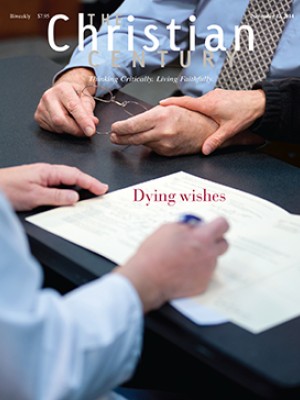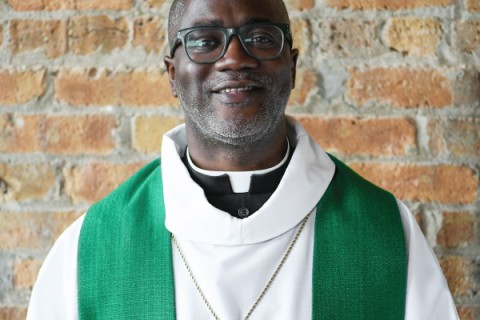Care at the end

A recent cover of People magazine featured the story of Brittany Maynard, a 29-year-old woman with brain cancer who had announced the date she would end her own life. She had moved to Oregon, where assisted suicide is legal. Maynard wanted to make sure that she could be prescribed a drug so that she could end her life and reduce her suffering and that of her family.
This is a familiar argument. When former archbishop of Canterbury George Carey recently announced his support for a bill to legalize assisted suicide in the United Kingdom, he cited the need to reduce unnecessary suffering. Others argue that individuals have the right to control their own dying and that such a right includes being able to get a prescription for a lethal dose of drugs.
Read our latest issue or browse back issues.
In the United States, assisted suicide has mostly been a hard sell. Since Oregon legalized physician-assisted suicide in 1994, more than 140 legislative proposals in 27 states have failed. Oregon, Washington, Montana, Vermont, and Arizona are the only states where physician-assisted suicide is legal.
Among the most compelling reasons to resist legalization is that every human being is of inestimable worth, a worth undiminished by illness or disease. The worry is that once assisted suicide is tolerated, it will likely become more and more expected. Social pressure will increase for people to end their lives, since society has deemed them lives not worth living. (Physician and ethicist Daniel Sulmasy sees this process happening in the Netherlands—see "Can doctors help us die well?")
Dr. Atul Gawande, author of Being Mortal, says that the legalization of assisted suicide expresses people’s lack of confidence in medicine’s ability to manage pain and provide them with their “best possible” last days.
Rather than embrace assisted suicide, we might better concentrate on improving end-of-life care so that pain is managed and a person’s wishes are respected. There are some obvious steps to take. One is to encourage conversations about treatment. A remarkably successful effort of this kind was led by medical and community leaders in La Crosse, Wisconsin. Their work shows what can be accomplished by a consistent, patient-centered discussion of advance directives on care (see "Dying wishes").
A very simple step is to allow Medicare physicians to bill for spending time talking with patients about end-of-life care. Sadly, when this reform was proposed as part of the Affordable Care Act, opponents demonized it as the creation of “death panels.”
Another step is to broaden doctors’ awareness and use of palliative care. Great strides have made in this field, but training in palliative medicine is still spotty in medical schools, and many physicians have insufficient information.
Medicine more than ever has the means to postpone death. More than ever it has the means to ease suffering. The challenge is to make medicine a true partner with patients in the holy work of dying.






